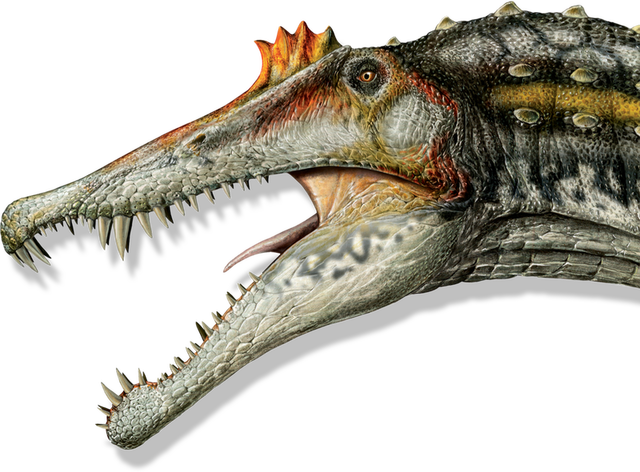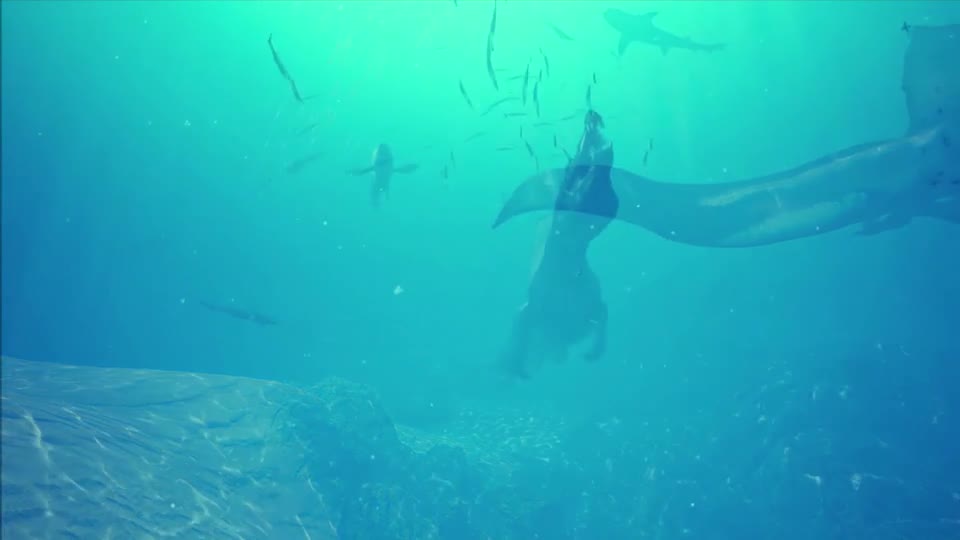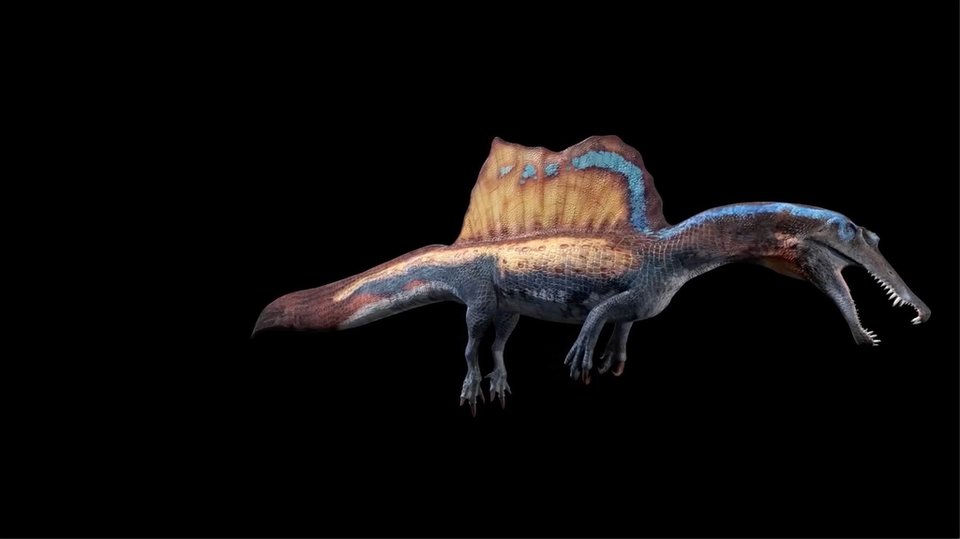LifeinWater
SomescientistsdisagreedwithIbrahim.So,withagrantfromtheNationalGeographicSociety,Ibrahimsearchedformorefossils.Heneededproof.Theworkwashard.But,itbecamerewardingaftertheteamdiscovered
more pieces.
Inotherdinosaurs,thetailcomestoapoint.InSpinosaurus,thetailisbroad.Itlookslikeapaddle.Tinybumpsnearthetipmayhaveletitmovebackand forth.

Spinosaurus hadcrocodile-likejawswithlarge,cone-shapedteethtogripslippery fish.
Ibrahimwantedtoknowhowthistailworkedinthewater.Hefoundoutthatthetailhasmoreforwardthrustinwaterthanotherdinosaurtailshaveonland.Now,Ibrahimwassure.Spinosaurus spentmostofitstimeinthe water.

FossilsegmentsofSpinosaurus’tailshowthatitwasbroadandusedas
a paddle.

ScientistspreviouslythoughtSpinosaurus’tailwasnarrow
and pointed.
Inthisanimation,aSpinosaurususesitspaddle-liketailtomovethrough water.
QuestionsRemain
Researchgoeson.Anotherfossilcouldbeanotherclue.It’sabonefromthedinosaur’sfoot.Now,theteamcanrecreatethewholefoot.Wasitwebbed?Thatwouldbegoodforanaquatic dinosaur.
IbrahimcontinuestodigtofindanswerstohisSpinosaurusquestions.

Scientistsattempttocreatealife-sizemodel
ofSpinosaurus.Thisshowswhatisnowknownabout its tail.
AViewAroundSpinosaurus
Dragtheslidertoturnthis3DmodelofSpinosaurus.

